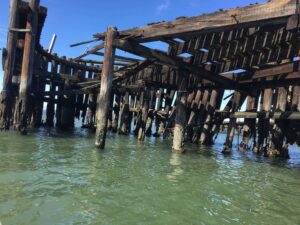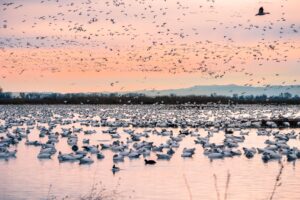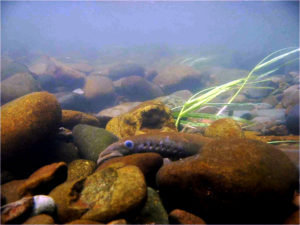At first glance the tan building blends into the rest of Petaluma’s Casa Grande High School. It’s nondescript from the outside, but it houses a rare kind of conservation organization, the United Anglers of Casa Grande. A large plaque greets visitors right inside the front door: “Our Hatchery. Our Dream.”
In 1982, a student in Tom Furrer’s biology class voiced concern about the degraded environment left to his generation. Furrer and his students developed a plan to restore the seven-mile stretch of Adobe Creek that flows past the school. “The creek was nothing more than a crevice in the ground with some rocks in it,” says Furrer, “but here we are 27 years later with a healthy stream and a vibrant fish population.”
It hasn’t been easy. The early restoration work involved hauling tons of trash from the dried-up creek bed, planting thousands of trees, and battling the city–which diverted almost all of the creek’s water. In the early 1980s, well before daylighting urban creeks became a common call to action, Adobe Creek was so foul that there were plans to put it in a culvert and get it out of sight.
As the students continued their restoration work, they noticed that steelhead trout still returned to the creek to spawn. The creek was in such bad shape that, without intervention, the fish would have died. So the students built a fish hatchery. In 1987, they saved 2,000 finger-size baby steelhead from drying pools. The modest fish-rearing facility–which began in a derelict greenhouse at the school–turned out to be seismically unsafe and was soon condemned. Undeterred, the students kept restoring Adobe Creek and raised over $500,000 to build a fully functioning hatchery, which opened in 1993.
As the creek’s health improved, chinook and king salmon started returning to spawn. Now, the United Anglers of Casa Grande have turned their efforts toward the crashing chinook population. They raise 40,000 to 50,000 salmon every year. Students sometimes arrive before school to care for the fish, or to catch fish from the creek in the predawn hours during spawning season. “These kids are ready for action,” says Furrer. “There’s no complaining. It’s ‘give me a shovel; I want to go to work. I want to make a difference.'”
During one visit, the hatchery bubbles with excitement, both from the massive water circulators and the tenor of adolescent voices. The students are gearing up to catch spawning salmon right out of Adobe Creek. Catching and raising local fish helps maintain genetic diversity while enhancing salmon survival rates. The first step in this process is to harvest sperm and eggs from some returning salmon, and then incubate baby fish in the hatchery. After the babies hatch they’re transferred to a small tank, where they grow and start to resemble adult fish. Then they’re placed in a raceway (a long rectangular holding tank), where they mature for several months under the students’ watchful eyes. Next the United Anglers take their fish to Tiburon Salmon Institute’s grow-out pens at San Francisco State University’s Romberg Center on Richardson Bay, where they are held and then released into the Bay.
“This program has empowered students. Rather just reading about it and hearing about it, they’re reading about it, hearing about it, and then applying it,” says former member Dan Hubacker, now a fishery technician.
Anglers co-president Lindsey Wachsman, who will be graduating this spring, still remembers catching her first salmon in the creek. “I’ve thought about becoming a fisheries biologist,” she says. “I’m definitely interested in working with wildlife and animals.”
With the help of the California Department of Fish and Game, the anglers tagged their salmon for the first time last year, so they can track returning fish. When these salmon return to spawn, some will head to Adobe Creek, but many will swim up the Sacramento River. “We hope they make it as far as the Feather River Fish Hatchery in Oroville,” says Furrer. “Our alumni run that hatchery, the biggest in California. That would be really exciting.”
Learn more at uacg.org.

.jpg)



